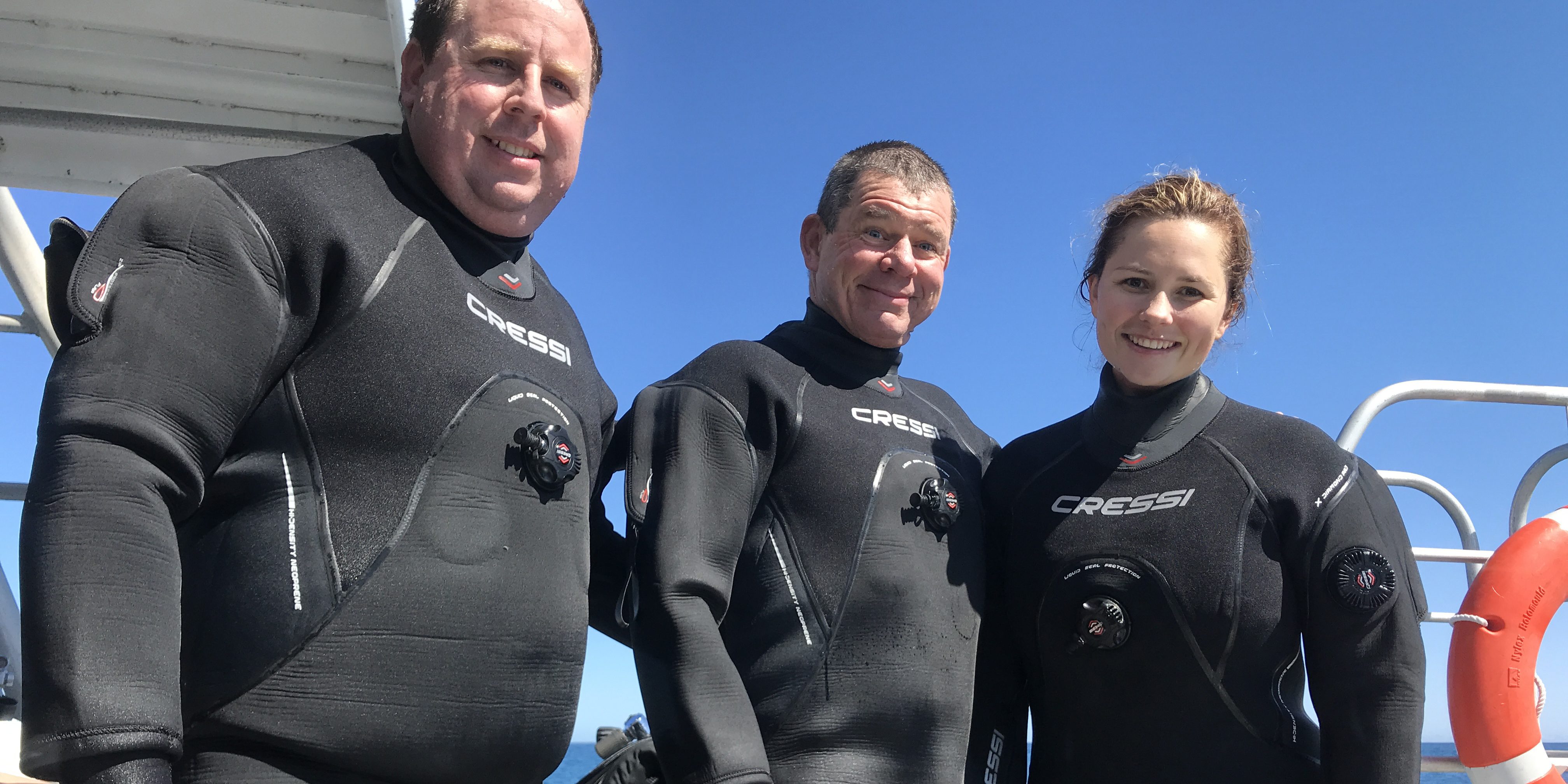If you’re new to diving, it’s possible you’ve only ever heard of a wetsuit. What you may not know, is there’s such a thing as a ‘drysuit’ too.
So, what is a drysuit and how does it differ to a wetsuit for diving?
Read more to find out.
What is a wetsuit?
You probably know what a wetsuit is and when to wear one, but what is it made of and what does it actually do?
Wetsuits are made of rubber neoprene and are designed to keep you warm when wet. However, it’s important to note that they’re not waterproof. And if you have a loose-fitting wetsuit, you will get cold, so it’s best to ensure yours is skin-tight.
What is a drysuit?
Drysuits are made from foam neoprene, crushed neoprene, vulcanized rubber, or heavy-duty nylon.
Although dry suits obviously too, get wet when you’re in the water, they’re completely waterproof. This means that only your suit will get wet when diving, leaving the rest of you completely dry – how good is that?
Benefits of diving in a drysuit
Other than not getting you wet, there are many other benefits of diving in a drysuit.
We share just a few:
You’ll stay warm
The fact that a drysuit is waterproof, means you’re far more likely to stay dry and warm in the water and in-between your dives as well.
We can’t think of anything we’d rather hear when diving in winter.
You can wear clothes underneath
You read right. Drysuits fit far more loosely than wetsuits and allow you to actually wear clothes or insulating layers underneath.
What should you wear underneath? You can wear as much or as little as you want, from a thin base layer, to even a tracksuit (this is good for those who really feel the cold).
We don’t recommend wearing the dry suit without anything under it though. Why? Because you sweat when doing any activities such as diving, and wearing something underneath, such as a wicking base layer, will help pull the sweat away from your body. You’ll be warmer and more comfortable that way.
Increased buoyancy
Did you know that wetsuits compress with depth and loose some of their buoyancy? Dry suits on the other hand, allow you to add air and compensate for the increased pressure at depth when diving.
Maintaining neutral buoyancy in a drysuit requires certain skills though, and can take quite some getting used to. This is why we recommend receiving proper training from a qualified instructor before diving in your new drysuit.
If you purchase a drysuit from Dolphin Scuba, we’ll give you this training as part of your purchase package, ensuring you’re completely comfortable and ready to dive.
Want to go one step further and be drysuit diver certified? This can completed through a PADI Speciality Course. Ask us to find out more.
At Dolphin Scuba in Welshpool, Perth, we have a great range of drysuits. Check out our range here or come and see us in store to find out more.






